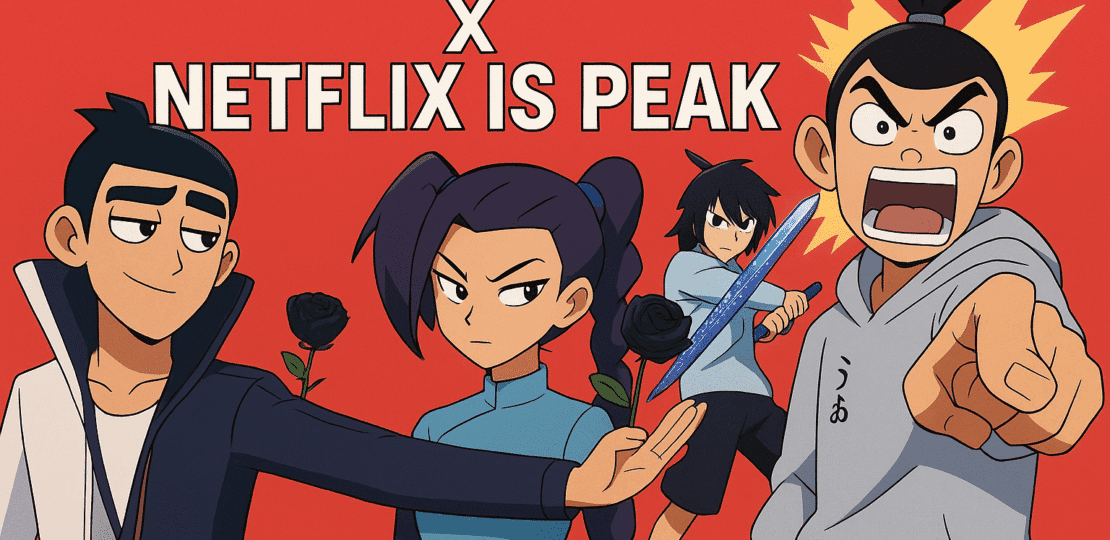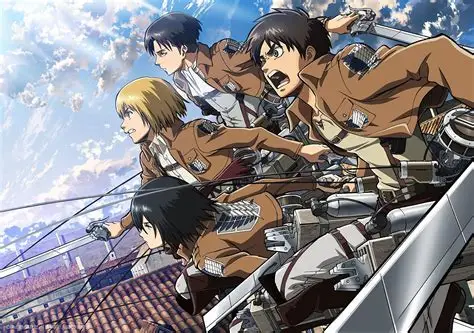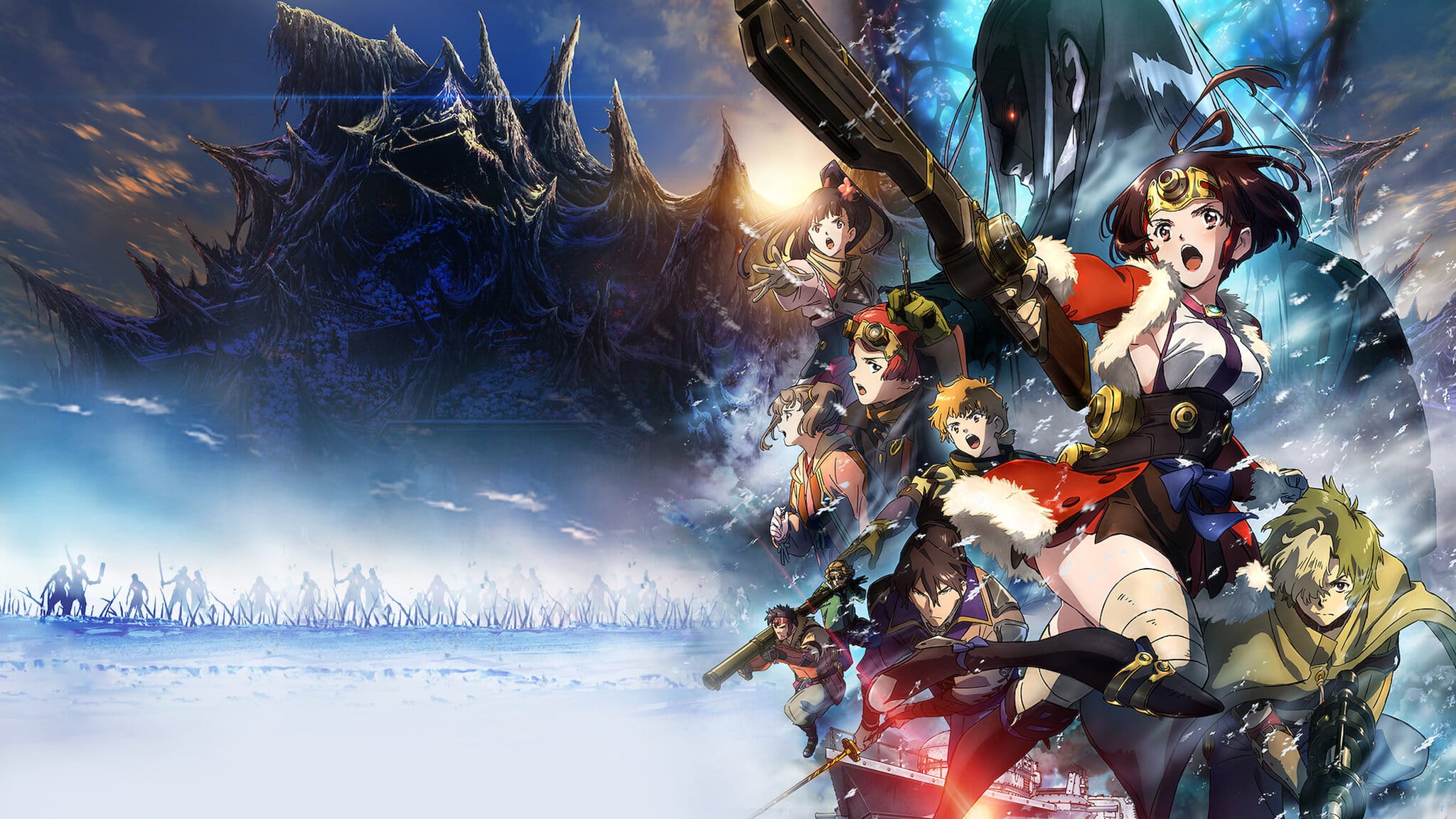Scissors Seven ( Scissors 7 Seven ) is the most Underrated Chinese Anime
September 17, 2025 | by Haku

Scissor Seven: The Pinnacle of Underrated Chinese Donghua
Scissor Seven stands out as one of the most innovative and engaging Chinese donghua series, blending humor, action, and emotional depth in a way that captivates viewers. Despite its high quality, it remains underrated globally, often overshadowed by Japanese anime. Research suggests its unique style and short episodes make it highly accessible, appealing to fans of absurd comedy and intense fights. It seems likely that its mix of genres contributes to its charm, though some note the tone shifts in later seasons as a point of debate. Empathetically, while tastes vary, its creativity offers something fresh for diverse audiences.
Key Strengths
The series excels in character development, with protagonist Seven‘s journey from clumsy barber to powerful assassin providing relatable growth. Its animation shines in dynamic sequences, drawing praise for fluidity and expressiveness. Themes of identity and redemption add layers without overwhelming the fun.
Why It Deserves More Recognition
As a Netflix original, it’s readily available, yet lacks the marketing hype of bigger titles. Fans highlight its cultural fusion of wuxia elements with modern humor, making it a bridge between Eastern traditions and global appeal. The episodic format suits quick watches, ideal for busy viewers.
Potential Drawbacks and Broader Appeal
Some viewers find the humor niche or the plot simple at first, but this evolves into deeper narratives. Overall, its balance leans toward broad enjoyment, especially for those seeking alternatives to mainstream anime.
Scissor Seven shines as the pinnacle of underrated Chinese donghua, captivating with its blend of absurdity and heart. Created by He Xiaofeng, this series follows Seven, an amnesiac assassin moonlighting as a barber. Its global appeal on Netflix marks it as a trailblazer in donghua exports.
The show debuted in 2018, spanning multiple seasons with ongoing releases. Each episode runs 13-20 minutes, perfect for quick watches. Fans praise its evolution from comedy to deep lore.
Produced by Sharefun Studio and AHA Entertainment, it features vibrant animation. Its Mandarin origins highlight Chinese cultural elements. Yet, it remains underappreciated amid anime dominance.
The plot centers on Chicken Island, a quirky haven for assassins and oddballs. Seven takes on bizarre jobs, from cutting hair to failed hits. His past as a shadow assassin unfolds gradually.
Conflicts escalate with threats from the Xuanwu Kingdom and Stan Country. Seven faces poisons, betrayals, and epic battles. The story builds to revelations about his lost memories.
Humor stems from Seven‘s clumsiness, like botched assassinations turning comedic. Dramatic moments, such as rescues and confrontations, add emotional weight. This duality keeps the narrative fresh.
Themes explore amnesia and self-discovery. Seven‘s quest for identity resonates deeply. Friendships and romances ground the chaos in relatable human experiences.
The series avoids heavy filler, focusing on tight storytelling. Each season advances the arc while delivering standalone fun. It’s a model of efficient pacing in animation.
Spin-offs and prequels expand the universe. A movie sequel ties into season four‘s cliffhangers. This multimedia approach enhances fan engagement.
Overall, Scissor Seven‘s foundation lies in its clever premise. It hooks viewers with laughs, then delivers heartfelt punches. This makes it stand out in the donghua landscape.
Innovative Storytelling and Character Depth
Seven‘s journey starts with failed assassinations, revealing his shadow assassin past. Amnesia adds mystery, blending humor with emotional stakes. His scissors become a symbol of creativity.
Side characters like Thirteen bring romance and rivalry. As Plum Blossom Thirteen, she seeks revenge and strength. Their interactions evolve from foes to allies.
Dabao, the shop manager, offers comic relief and hidden power. His chicken-like form hides a tragic backstory. He mentors Seven through tough spots.
Xiaofei, Dabao‘s adopted son, adds innocence to the mix. His hybrid nature sparks lighthearted moments. Together, they form a found family dynamic.
Antagonists like Redtooth challenge Seven‘s morals. As a bloodthirsty killer, he contrasts Seven‘s reluctance. Their clashes highlight themes of violence.
Green Phoenix embodies cunning and betrayal. His schemes drive major plot twists. He represents the dark side of the assassin world.
The Prince of Stan introduces sci-fi elements. His robotic army threatens Chicken Island. This fusion of genres keeps things unpredictable.
Chairman Jiang provides wisdom and intrigue. Her leadership on the island balances chaos. She aids Seven in key battles.
Cola, a young girl with powers, injects cuteness and danger. Her story ties into larger conspiracies. She humanizes the high-stakes world.
Captain Jack parodies pirate tropes. His over-the-top antics lead to hilarious subplots. Yet, he shows loyalty in crises.
The narrative weaves episodic missions with overarching revelations. Early seasons focus on comedy, later ones on drama. This progression builds investment.
Themes of redemption shine through Seven‘s growth. From bungler to hero, he inspires change. It avoids clichés, opting for fresh twists.
Humor arises from absurd contracts, like hair-cutting hits. Dramatic shifts add surprise without jarring. This balance elevates it above peers.
Season one introduces the barber shop life. Seven‘s low ranking belies his skills. Fights tease his true power.
Season two deepens his past with Xuanwu ties. Thirteen‘s backstory unfolds. Emotional highs emerge amid laughs.
Season three ramps up island threats. Seven confronts his amnesia head-on. Alliances form against invaders.
Season four explores Stan Country conflicts. A film sequel expands this arc. It heightens stakes dramatically.
Season five delves into backstory, enriching lore. Fans note emotional peaks in fights. It’s a masterclass in arcs.
Prequel manhua details Seven‘s origins. It adds layers to his codename Qi. This enriches the main series.
Spin-offs like leg guy‘s tale explore side worlds. They offer fun detours. Fans appreciate the expanded lore.
Seven‘s relationships, like with Thirteen, evolve naturally. They avoid forced romance, focusing on growth. Empathy drives the story.
Dabao‘s transformation abilities surprise viewers. His past killings add depth. He’s more than comic relief.
Thirteen‘s family issues resonate. Her quest for independence empowers. It subverts typical assassin tropes.
Xiaofei‘s innocence contrasts the violence. His moments lighten tense scenes. He symbolizes hope.
Redtooth‘s brutality forces moral questions. Seven‘s mercy clashes with his rage. It explores forgiveness.
Green Phoenix‘s manipulations create suspense. His alliances shift unpredictably. He embodies cunning strategy.
The Prince‘s tech gadgets innovate fights. Lasers and robots mix with martial arts. It blends sci-fi seamlessly.
Chairman Jiang‘s secrets unfold slowly. Her role in island defense is crucial. She mentors subtly.
Cola‘s powers evolve over seasons. Her ties to ancient forces add mystery. She grows alongside Seven.
Captain Jack‘s loyalty shines in battles. His humor masks competence. He’s a fan favorite for antics.
The plot‘s unpredictability keeps engagement high. Twists like memory recoveries thrill. It rewards attentive viewers.
Emotional arcs, like Seven‘s identity crisis, tug heartstrings. They balance the comedy perfectly. Depth emerges organically.
Comparisons to Stephen Chow films highlight wit. Rurouni Kenshin influences action ethics. Yet, it carves its own path.
The series tackles loss through backstories. Characters grieve and heal. It handles heavy topics lightly.
Friendship themes strengthen the core. Seven‘s bonds save him repeatedly. They underscore unity.
Romantic subplots develop slowly. Seven and Thirteen‘s chemistry builds tension. It’s subtle and rewarding.
Villain motivations add nuance. Not all are pure evil. Some seek power for reasons.
Heroic sacrifices heighten drama. Allies risk everything. It creates memorable moments.
World-building expands beyond Chicken Island. Xuanwu‘s clans add politics. Stan‘s tech contrasts traditions.
Cultural nods to wuxia enrich narratives. Flying swords and qi powers feel authentic. They honor roots.
Innovative plots twist expectations. What starts silly turns epic. This keeps seasons fresh.
Character flaws make them relatable. Seven‘s clumsiness endears. It humanizes superhuman feats.
Growth arcs span seasons. Early failures lead to triumphs. Viewers root for progress.
Supporting casts shine in spotlights. Episodes focus on backstories. It fleshes out the world.
Moral dilemmas challenge protagonists. Killing versus mercy debates arise. They add philosophical depth.
Humor evolves with the story. Early slapstick matures to witty banter. It mirrors character development.
Overall, storytelling innovation sets it apart in donghua. Characters feel alive, drawing viewers in. It’s why fans call it a gem.
Exceptional Animation and Action Sequences
Animation style is quirky, blending 2D with expressive flair. Fights feature fluid choreography, rivaling top anime. Hand-drawn elements add life.
Season five boasts peak hand-to-hand combat. Dynamic framing enhances tension. Color shifts underscore emotions.
Music by composers like Hou Lei complements visuals. Sound design amplifies humor and drama. It’s immersive and polished.
Art shifts during key moments add creativity. No filler; every frame counts. This efficiency boosts rewatchability.
Nominated at Annecy Festival, it gained early acclaim. Visuals evolve, improving per season. It’s a visual treat.
Action rivals Fog Hill of Five Elements. Yet, humor integrates seamlessly. This fusion is rare.
Telekinetic scissors enable inventive fights. Transformations add spectacle. It’s endlessly creative.
Donghua industry growth aids its quality. Shanghai policies supported production. Result: top-tier visuals.
In short, animation excellence defines its superiority. Action sequences thrill consistently. It’s a benchmark for donghua.
Fight scenes incorporate wuxia flips and spins. Seven‘s scissors slice with precision. Animators capture speed masterfully.
Backgrounds depict vibrant islands and kingdoms. Details like bustling markets immerse viewers. They enhance atmosphere.
Character designs exaggerate features for comedy. Seven‘s hoodie hides his menace. It’s iconic and memorable.
Effects like qi bursts glow vividly. They pop during climaxes. Lighting adds drama to shadows.
Pacing in battles builds suspense. Slow-motion highlights impacts. It heightens excitement.
Voice acting brings energy. He Xiaofeng‘s dual tones for Seven impress. Dubs maintain charm globally.
Soundtracks mix upbeat tracks with tense scores. Openings set playful tones. They stick with fans.
Evolution in style shows budget growth. Early seasons charm with simplicity. Later ones dazzle with complexity.
Comparisons to One Punch Man note similar absurdity. But Scissor Seven‘s style is distinctly Chinese. Wuxia influences shine in battles.
Innovative camera angles twist perspectives. Rotoscoping adds realism to moves. It’s technically impressive.
Emotional scenes use subtle animations. Facial expressions convey depth. They tug at heartstrings.
Humor visuals exaggerate reactions. Slapstick gags land visually. They complement the script.
Group fights coordinate chaos beautifully. Allies sync attacks. It’s orchestrated like a dance.
Power-ups transform designs temporarily. Seven‘s serious mode shifts aesthetics. It signals intensity.
Environmental interactions destroy scenery dynamically. Debris flies realistically. It amps up immersion.
Overall, the animation pushes boundaries. It blends styles fluidly. This makes sequences unforgettable.
| Season | Episodes | Release Year | Key Highlights | Runtime Range |
|---|---|---|---|---|
| 1 | 14 | 2018 | Intro to Seven‘s world, comedic setups | 13-20 min |
| 2 | 10 | 2019 | Deeper past reveals, action ramps up | 13-20 min |
| 3 | 10 | 2021 | Emotional arcs, island threats | 13-20 min |
| 4 | 10 | 2023 | Xuanwu conflicts, film tease | 13-20 min |
| 5 | 10 | 2024 | Backstory focus, peak fights | 13-20 min |
| 6 | TBA | Upcoming | High anticipation, ongoing lore | TBA |
Character animations evolve with skills. Novice Seven stumbles comically. Mastered forms flow gracefully.
Special effects like energy waves dazzle. They use vibrant colors. It elevates mundane to spectacular.
Quiet moments animate details finely. Wind in hair or subtle breaths add realism. They ground the fantasy.
Battle strategies visualize cleverly. Plans unfold in split-screens. It engages tactically.
Humor integrates visual puns. Scissors as weapons twist expectations. It’s creatively hilarious.
The series‘ polish rivals big studios. Independent roots shine through passion. It inspires aspiring animators.
Cultural Impact and Underrated Status
As Netflix‘s first Chinese Original, it broke barriers. Global fans use “donghua” more, boosting awareness. Yet, it’s overshadowed by anime giants.
Social media followers grow steadily. Discussions call it a hidden gem. Cultural export success rivals major films.
Biases dismiss donghua as lesser. Despite high scores on review sites. It challenges stereotypes.
Influences from wuxia and folklore enrich it. Global platforms host it widely. Fan content thrives online.
Underrated due to limited marketing. Compared to peers, it’s niche. But quality surpasses many.
Chinese policies fueled its rise. Shanghai‘s animation scene helped. It’s a soft power symbol.
Prequels and films expand impact. Fan debates on arcs show engagement. Communities discuss passionately.
In donghua rankings, it tops lists. Outshines similar series. Underrated status fuels passion.
Language dubs broaden reach. English voices add flair. It’s inclusive and accessible.
Ultimately, its impact grows steadily. Underrated no more with rising fame. It’s the best for innovation and heart.
Reception mixes praise for animation with notes on pacing. Early reviews highlight uniqueness. Later seasons earn acclaim for depth.
Global audiences discover it via streaming. Word-of-mouth spreads its appeal. It’s a gateway to donghua.
Cultural nods include folklore creatures. Magas and yokai-like beings appear. They blend traditions seamlessly.
Fan art and cosplay celebrate characters. Seven‘s hoodie becomes iconic. Events feature the series.
Merchandise like figures sells modestly. It reflects dedicated fandom. Growth potential remains high.
Comparisons to Link Click note similar emotional pulls. But Scissor Seven‘s humor sets it apart. It’s more versatile.
Industry recognition includes festival nods. It paves ways for more exports. Donghua‘s profile rises.
Underrated debates center on visibility. Netflix algorithms bury it sometimes. Fans push for promotion.
Themes of cultural identity mirror Seven‘s quest. It subtly comments on heritage. This adds resonance.
International dubs vary in quality. Mandarin original captures nuances best. Subs preserve humor.
Community forums buzz with theories. Future seasons spark speculation. Engagement stays strong.
Overall, its cultural footprint expands. From niche to notable, it endures. This cements its legacy.
RELATED POSTS
View all


